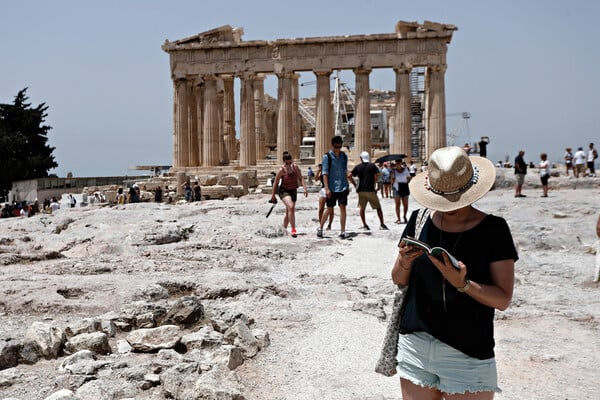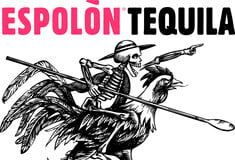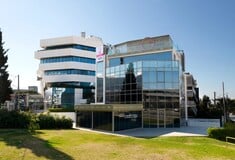Acropolis
The greatest and finest sanctuary of ancient Athens, dedicated primarily to its patron, the goddess Athena, dominates the centre of the modern city from the hill known as the Acropolis. Everything you know about the Ancient History of Athens is connected to this place. The Acropolis monuments are among the most important in the world. These unique masterpieces of ancient architecture combine different orders and styles of Classical art in a most innovative manner and have influenced art and culture for many centuries. The Acropolis of the fifth century BC is the most accurate reflection of the splendour, power and wealth of Athens at its greatest peak, the golden age of Perikles.
Open Daily 08.00-20.00. Last admission 19.30. Entrance fron Dionysioy Areopagitou str.
Acropolis Museum
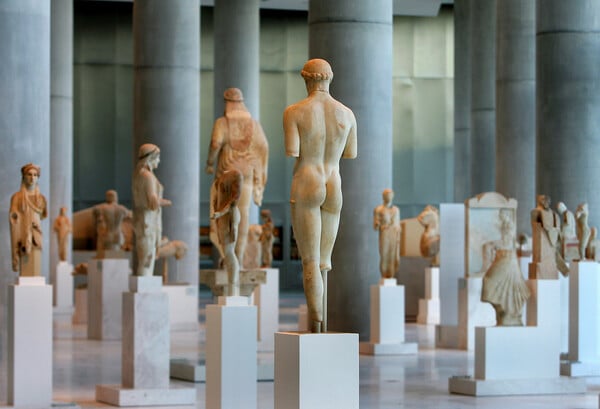
All antiquities formerly crammed in the small museum atop the namesake hill were transported during 2007 in a mammoth-sized operation. The last exhibits were placed into their new positions in April 2008.
The exhibition rooms house the most important artefacts of the classical period, as well as other treasures that were previously kept in storage for lack of space. The museum has divided its roughly 4,000 artefacts in five collections: The finds from the slopes of the Acropolis Hill, antiquities from the archaic period, the classical period, the post-classical era and the Roman period. Some of the most emblematic ancient Greek antiquities are displayed: The archaic Kouroi (male statues) and Kores (female statues), a vast number of pottery, marble sculptures of maidens and athletes, the Parthenon frieze and all its surviving parts.
Visitors will also have a chance to admire a collection of artefacts dug out during the excavation process on the ground floor and inspect the ancient city-beneath-the-city. Archaeologists uncovered ancient roads, houses, bath houses and workshops dating between 3,000 BCE-1,200 BCE, all of which can now be examined through a glass floor that extends from the outside area to the main hall. The route one follows forms a spiral pathway leading from the ground floor where the archaic artefacts are exhibited upwards towards the Parthenon marbles and back down through the Roman era.
The top floor houses the Parthenon frieze which is displayed in its original, 2,500-year-old full-length entirety, placed at the same angle as it did when it was on its original location, to maximise its effect on the viewer. The pieces missing from the frieze, famously known as the Elgin Marbles, have been replaced by duplicates. Greeks have been very vocal in requesting the originals back from the British Museum where they have been housed since Lord Elgin hacked them off the monument.
ENTRANCE from Dionysiou Areopagitou, Makriyanni, Tel: +03 210 9241043, Mon 08:00-16:00 / Fri 08:00-22:00 / all other days 08:00-20:00/ Entrance: €5 / Fri: Restaurant open till midnight / www.theacropolismuseum.gr
BEST MUSEUMS IN TOWN
Benaki Museum

The private museum in the city's chic neighbourhood of Kolonaki is housed in a beautiful 19th century neo-classical mansion, donated by Greek benefactor Antonis Benakis. The first floor is dedicated to Palaeolithic and Bronze Ages, the Cycladic, Mycenaean and classical era. There is a vast collection of tools, marble vessels, golden jewellery and painted pottery, glassware, ceramics, funerary stele, murals, Fayum portraits, as well as a large collection of roman statues. Don't miss the Fayum "Portrait of a Young Man", an expressive portrait of a male form from Antinoopoli of Egypt, painted with the encaustic method on linen. It dates from the 3rd century CE and many components of the new wave in Greek painting have their roots in it.
The museum has two more annexes: The modern art division at Pireos Street and the Islamic Museum in Kerameikos (see descriptions below).
1 Koumbari Street, Kolonaki, 210 3671000, www.benaki.gr / Ticket: 6 Euros, temporary exhibitions:3 Euros / Metro: Syntagma
Byzantine & Christian Museum
One of the most impressive collections of Byzantine and post-Byzantine era artwork is housed in the Byzantine Museum, whose aim is to acquire, save, conserve, record and showcase artefacts of early Christian, Byzantine, Medieval and modern religious art. Its 25,000 items date from the 3rd until the 20th centuries CE and originate from Greece, Asia Minor and the Balkans. Collections include among others, sculptures, icons, wall-paintings, ceramics, textiles, manuscripts, drawings and chalcography.
22 Vasilisis Sofias, Kolonaki, Tel: +30 210 7294926 / Tickets: 4 for temporary exhibition / Metro: Evangelismos.
Museum of Cycladic Art (MCA)
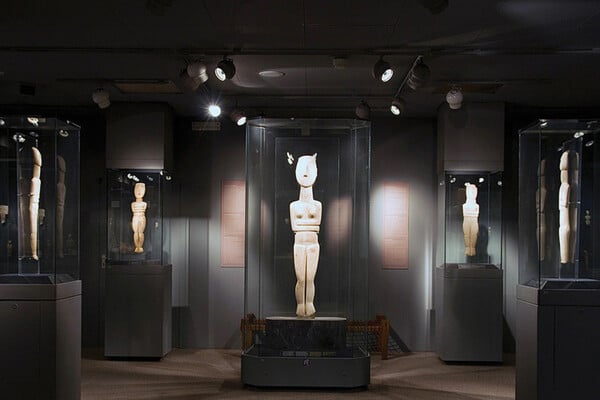
As its name suggest, this museum showcases the largest collection of the gorgeous white marble figurines of Cycladic Art, which have influenced modern sculptors with their grace, abstractive form and sleek surface. Most of them were discovered in tombs but their meaning is still debated. These figurines are mostly female, with hands crossed in the front and slightly bended knees. The seated figure raising its cup in toast is of exemplary technique, as well as the violin-shaped representing body shapes in the third millennium BC. Other displays show the marble vessels and basins used for religious and everyday activities. On the second floor are exhibited artefacts from Mycenae up until the Roman era: Hydrias, glass vessels for oils, golden objects and amphorae from Attica. The third floor houses temporary exhibitions, while the fourth floor presents the Karolos Politis collection, a rich selection of about 120 artefacts covering all periods of Greek art until the 6th century AC.
4 Neofytou Douka street, Kolonaki, Tel: +30 210 7228321 / Ticket: 7, on Monday 3.5 / www.cycladic.gr / Metro: Syntagma, Evangelismos
The Archaeological Museum
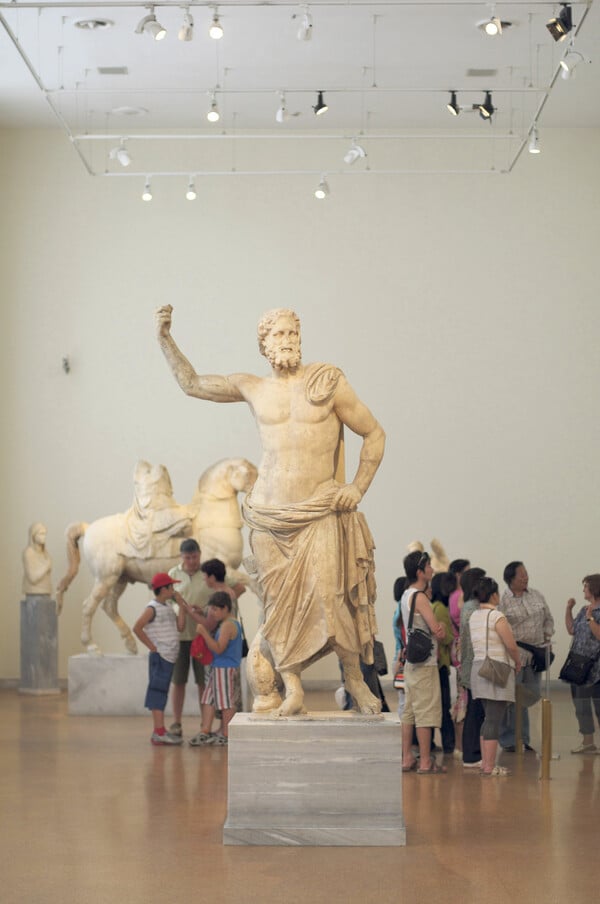
Start with the Prehistoric collection, which includes artefacts from the Neolithic, Cycladic and Mycenaean periods, testifying to the long human presence in the area now known as Greece (6,800-3,200 BCE). The clay figurine of a man touching his head with his hand and the voluptuous female figurines are amongst the most famous Neolithic findings. As you marvel at the iconic Cycladic figurines in the next chamber, don't miss the largest surviving female figure from Amorgos Island, as well as the exquisite harpist, made from dazzling white marble.
Continuing with the Mycenaean exhibit, you will be stunned by the spectacular treasures discovered in Mycenae by German legendary archaeologist Heinrich Schliemann. The collection includes stone, bronze and ceramic pots, figurines, ivory and glass objects, as well as golden seals and rings from the vaulted tombs of Mycenae and other parts of the Peloponnese. The delicate golden funerary masks, cups and jewellery, as well as the carved ivory objects found in the royal tombs testify to the sophistication of the artistry, while the Linear B inscriptions provide information on the administrative organisation of the Mycenaean world. In this department you will also see the so-called Mask of Agamemnon, the famous gold mask covering the face of a man found in a tomb in Mycenae, originally thought to be the legendary king Agamemnon.
Other masterpieces of the Museum are found in the numerous sculpture galleries, where the visitor can trace the development of Greek sculpture from the 7th century BCE to the early Byzantine period. Among other artefacts, you will see the three-metre-tall Kouros from the Temple of Poseidon in Sounio, the bronze two-metre-tall statue of a mystery God (said to be Zeus or Poseidon), and the bronze Hellenistic masterpiece of a young rider on a horse. The Museum also has an inexhaustible collection of vases, pottery, metalwork and small objects which were used in everyday life.
Some of the most remarkable examples of fresco painting from the 16th century BCE come from Santorini, inspiring awe with their intricate details and vibrant colours. Some have been transferred to the Archaeological Museum of Santorini, but the Antelope, the Boxing Children and Spring will dazzle you with their vitality and figurativeness.
The Museum recently opened its excellent Egyptian collection, considered the fourth largest in Europe. The collection was donated by Ioannis Dimitriou in 1880 and Alexandros Rostovic in 1904. In total, the collection includes more than 6,000 artefacts. The visitor can admire the mummies, nine of which were donated by the Egyptian government in 1893, rare statues, tools, jewels, a wooden body tag for a mummy, a stunning bronze statue of a princess, intact bird eggs and a 3,000-year-old loaf of bread with a bite-sized chunk missing. The exhibition's centrepiece is a bronze statue of the princess-priestess Takushit, dating to around 670 BCE. Further down there are also some exquisite Fayum funerary portraits, with their characteristic expressive eyes.
Last but not least, do not miss the collection of donors Antonis and Eleni Stathatos whose artefacts span from the 5th millennium BCE until the post-Byzantine era, and includes mostly pottery and jewellery. In 2009, a Cypriot collection of antiquities was inaugurated in the Museum, comprising of small statues, jewellery, jugs and pottery.
In 2006 and 2007, new important additions were made. The Getty Museum of California returned two important artefacts which were considered to have been looted, after a 10-year-old legal dispute with the Greek government. These are a 4th century BCE golden funerary wreath and a 6th century BCE marble statue of a woman. Previously, Getty had agreed to return a 4th century BCE tombstone from an area near Thebes and a 6th century BCE votive relief from the island of Thasos. All can be admired today in the museum. The museum is presently showcasing a temporary exhibition of The Antikythera Shipwreck (see Must-sees for details).
44 Patision Avenue, Tel: +30 213 21448000, 2144856 / Tickets: €7, free entrance on May 18th, June 5th, last weekend of September / http://www.namuseum.gr / Train: Victoria
4 MUST SEE EXHIBITIONS
Ai Weiwei
Museum of Cycladic Art
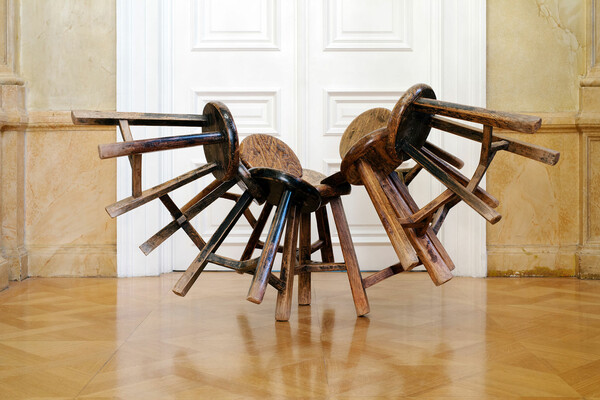
The artist's first major exhibition in Greece includes a new artwork that responds to the museum's collection. This is the artist's first exhibition in an archaeological museum and follows a close collaboration between Ai Weiwei and the MCA. Significant works by the Chinese artist are displayed among the museum's renowned permanent collection. The exhibition introduces Ai's practice to the Greek audience through some of his most canonical works and highlights his most recent activities from the past months that he has spent in Greece documenting the refugee crisis. The exhibition looks at his recurring use of particular materials which draw parallels with Greek counterparts, such as wood and marble. Amongst the iconic pieces on display are Divina Proportione (2012), Mask (2011), Cao (2014) and Grapes (2011).
4, Neophytou Douka str. www.cycladic.gr
The Equilibrists
Benaki Museum – Pireos Str.
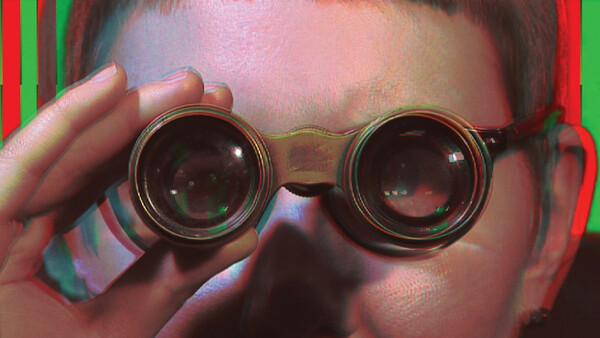
A project organized by the New Museum, New York and the DESTE Foundation in collaboration with the Benaki Museum, Athens, on the occasion of DESTE's 33rd anniversary. This project continues the DESTE Foundation's history of supporting talented emerging Greek artists. On the occasion of its anniversary, rather than focusing on its past, the Foundation is looking forward with a focus on the future of young art in Greece. "The Equilibrists" brings together work by a new generation of young Greek and Cypriot artists working in Athens and abroad. The artists were selected by the New Museum curators, Gary Carrion-Murayari and Helga Christoffersen, drawing on their own research and the recommendations of a team consisting of more than 20 advisors made up of curators, artists, and writers in Greece, and following trips to Athens, Thessaloniki, Cyprus, London, and Berlin.
138 Pireos & Andronikou St., www.benaki.gr
Ceramics from China
Benaki Museum – Koumpari str.
For the first time in 35 years, the Benaki Museum presents to the Greek and international public highlights from its collection of Chinese ceramics. Ninety masterpieces of ceramic art belonging to the historical collection of George Eumorfopoulos, donated to the Benaki Museum in the 1930s, testify to the global impact of Chinese civilisation, shed light on the course of contact between China and the West through art, and attest to the vision of the collector and his ties with Greece.
Koumbari str. 1 Koumbari St. & Vas. Sofias Ave., www.benaki.gr
Dodona: The Oracle of Sounds
Acropolis Museum
The exhibition aims at furthering our knowledge regarding the oldest Greek oracle, tracing the way it operated, its role and importance in the ancient world, and at the same time underlining the human need to predict the future.
The exhibit's narration begins with Dodona in the late Bronze Age. Clay and bronze artifacts illuminate the identity of the first inhabitants, the primitive cult of Mother Earth (Earth Goddess) and the establishment of Zeus' cult. The main interest in the exhibition lies in Zeus and his predominant presence in the sanctuary. The central theme is the prophetic oak tree that with the rustle of its leaves would answer the agonizing questions of people of what lies ahead.
Acropolis Museum,
15 Dionysiou Areopagitou Street, www.theacropolismuseum.gr


